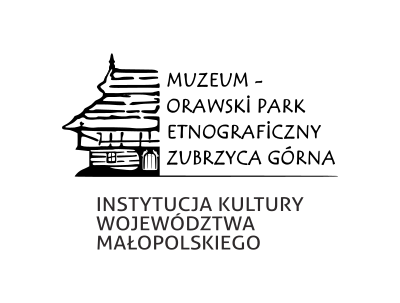Our open-air museum strives to present a totality of the old rural life, which was determined mainly by the vegetation cycle, the solstices of the seasons, the order of working in the field and the liturgical calendar. All those factors had a great impact on the totality of rural cultural landscape which becomes irretrievably lost in many cases. That is why, beyond presenting residential and utility buildings, rural industry buildings and sacral buildings, we desire to get closer to Orava culture through cyclical events which purpose is to remind, illustrate, but also save us from forgetting various traditions, customs and activities that once had constituted an intangible cultural heritage of Orava. Therefore, we have a wide range of cyclical events in our calendar:
Carol evening - held usually in the first week of January, it refers to the tradition of singing carols and pastorals together; accompanied by a local band and small snacks are served, we also encourage everyone to share a Christmas wafer with each other wishing them a Happy New Year.
Skubarki - the event draws on an old custom of plucking feathers together, but it is also about many other traditional works performed during carnival time. The purpose of the meeting is to integrate communities interested in old time customs. However, we would like that the meetings favor culture promotion and have an intergenerational character.
Contest for the most beautiful, traditional Easter basket - organized each year on Holy Saturday in the church of Our Lady of the Snows from Tokarnia in the open-air museum. Besides the contest, in which we pay special attention to traditional products and basket decoration, the brought food is also blessed according to tradition. Furthermore, every year we try to present in a simple way one topic related to the celebration of Easter.
Tradition of setting up a 'moj' - in late April/early May (the word moj in the Oravian dialect means May). This interesting tradition has survived in Orava, it is associated with coming spring and rituals in this season. 'Moj' (a stripped tree) is supposed to be stood in the night of St Philip and Jacob, from 30 April to 1 May. Looking back, a selected tree - a spruce, a pine or a fir was cut down and tree bark was removed, but on the top remained a green crown decorated with tissue paper and ribbons. A bachelor set up the 'moj' by the house of a maiden he liked and the girl had to prepare a little treat for him on Monday after Pentecost. The 'moj' was traditionally cut down, which was accompanied by playing on instruments: in the evening boys and girls gathered together around their cut tree, they logged wood, made a pile of it and set fire. Then they started the all-night party around the campfire.
Weekends with shows – events organized in spring and summer seasons related to various holidays and traditions which make the museum full of life. Beyond visiting historical buildings, visitors have an opportunity to try themselves in many household activities and see how the rural industry plants work.
Orava All Souls' Day (Polish: Zaduszki) – an event hold every year in November in a warm atmosphere which favors personal reflection on life. It commemorates all of those who rendered great service to the Orava region - social activists, folklorists, artists, teachers, people of culture and art. Memories accompanied by Orava music have a biographical character, sometimes very personal, the memories are most often prepared by family, friends, acquaintances, students who present both life and achievements, as well as their own memories regarding those who passed away.
In addition to the above events we offer also poetry and literary evenings - meetings with poets and writers who come from Orava or sympathize with the region, at the meetings they have a possibility to present their work as well as establish the direct contact with readers, residents of Orava, pupils belonging to Orava schools and literature enthusiasts. These meetings are held in autumn.
However, the most important event organized by our open-air museum is the Blueberry Festival (Polish: Święto Borówki) initiated in 2002. It is our biggest, cyclical outdoor event of ethnographic and folklore nature held traditionally on the last Sunday of July. The program contains performances of regional and folk groups, presentations of old-time craft, regional products of Polish and Slovak Orava as well as folk dance and folk music. Moreover, the Blueberry Festival offers folk art fair, professional art fair, contests, tasting regional dishes and many other attractions for both adults and children. At the same time, we make an effort that the event is not an ordinary festival, we promote what we think is the most beautiful in folk culture: traditional handicraft and authenticity. We are constantly supported by our partners: Babiogórski National Park, State Forests, Orava Cultural Center in Jabłonka and the Municipal Cultural Center in Lipnica Wielka.










